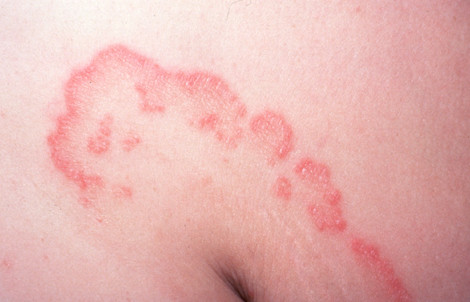

- #HOW LONG DOES IT TAKE FOR RINGWORM TO GO AWAY SKIN#
- #HOW LONG DOES IT TAKE FOR RINGWORM TO GO AWAY PATCH#
Vets will generally prescribe some combination of the below treatments for ringworm, to speed up the healing process: This is a routine culture that your vet can perform, and it’s really the most accurate diagnosis.
#HOW LONG DOES IT TAKE FOR RINGWORM TO GO AWAY SKIN#
The most accurate diagnosis is by a vet taking a sample skin scraping from your cat, usually with a toothbrush, and then growing the culture in a lab. To make things more complicated, doxycycline, terramycin, carpet fibers and dust can also cause the hair shaft to glow. A woods lamp is not complete indicator, though, because only about 60% of ringworm fungi show up under a woods lamp. Normally the whole hair shaft will glow, especially the base. Vets will normally first check for ringworm by using what’s called a “woods lamp.” Under the lamp in a dark room, the ringworm fungus fluoresces apple green. For tame cats, there are things you can do to speed up the healing process, as well as decrease the chances of reoccurrence. For feral cats, ringworm is generally not treated and it normally self-resolves. That said, it’s important to know that ringworm on cats will generally self-resolve within two to four months - meaning, it typically goes away on its own if you do nothing at all. Ringworm is definitely contagious - both to other pets and to humans.

#HOW LONG DOES IT TAKE FOR RINGWORM TO GO AWAY PATCH#
Just because the patch is going away doesn’t mean the cat is cleared of the infection. Hair-loss patches can come and go during the infection cycle. There is usually mild itching associated with ringworm, and cats will often show an early sign of ringworm by scratching at their ears. The patches don’t always occur in a circle, either sometimes ringworm shows up just as patchy baldness, and it can be with or without redness and/or inflammation. Ringworm lesions and patches of hair loss are frequently localized to the cat’s face, ears, and limbs, but they can occur anywhere on the body. Ringworm generally first shows itself as a small lesion with scaly skin in the center, which then grows to be a ring of patchy hair loss. Senior cats, stressed cats (maybe due to a recent move, a new cat in the household, or a recent adoption) and free-roaming cats that are outside and exposed to soil are all more susceptible to contracting ringworm. Longhaired cats are also more prone to ringworm than are shorthaired cats. Those most susceptible to ringworm are kittens and cats less than one year old, who are still developing an immune system, or cats whose immune systems are suppressed, such as FIV+ cats. It’s also hard to get rid of ringworm spores can be persistent in the environment for up to two years. Because the spores are microscopic and contagious, ringworm can be passed between cats via shared bedding, shared grooming tools, cat carriers, furniture, carpeting, etc. Athlete’s foot and jock itch are two types of ringworm that humans can get, sometimes from public places like locker rooms or public swimming pools.Ĭats can contract ringworm when they are exposed to infected soil, when they come in direct contact with another infected animal or person, or indirectly through their living environment. Humans can also get ringworm, either from a pet or from their environment. Cats and cattle are the two species of animals that seem to get ringworm the most, although dogs and other animals can contract it. Ringworm is a very hardy fungus that can be present in soil.

These are microscopic parasitic fungi that live on the skin, specifically in hair follicles. Ringworm is a skin infection caused by a fungus, otherwise known as dermatophytes. What’s in a name, right? In this case not much.


 0 kommentar(er)
0 kommentar(er)
